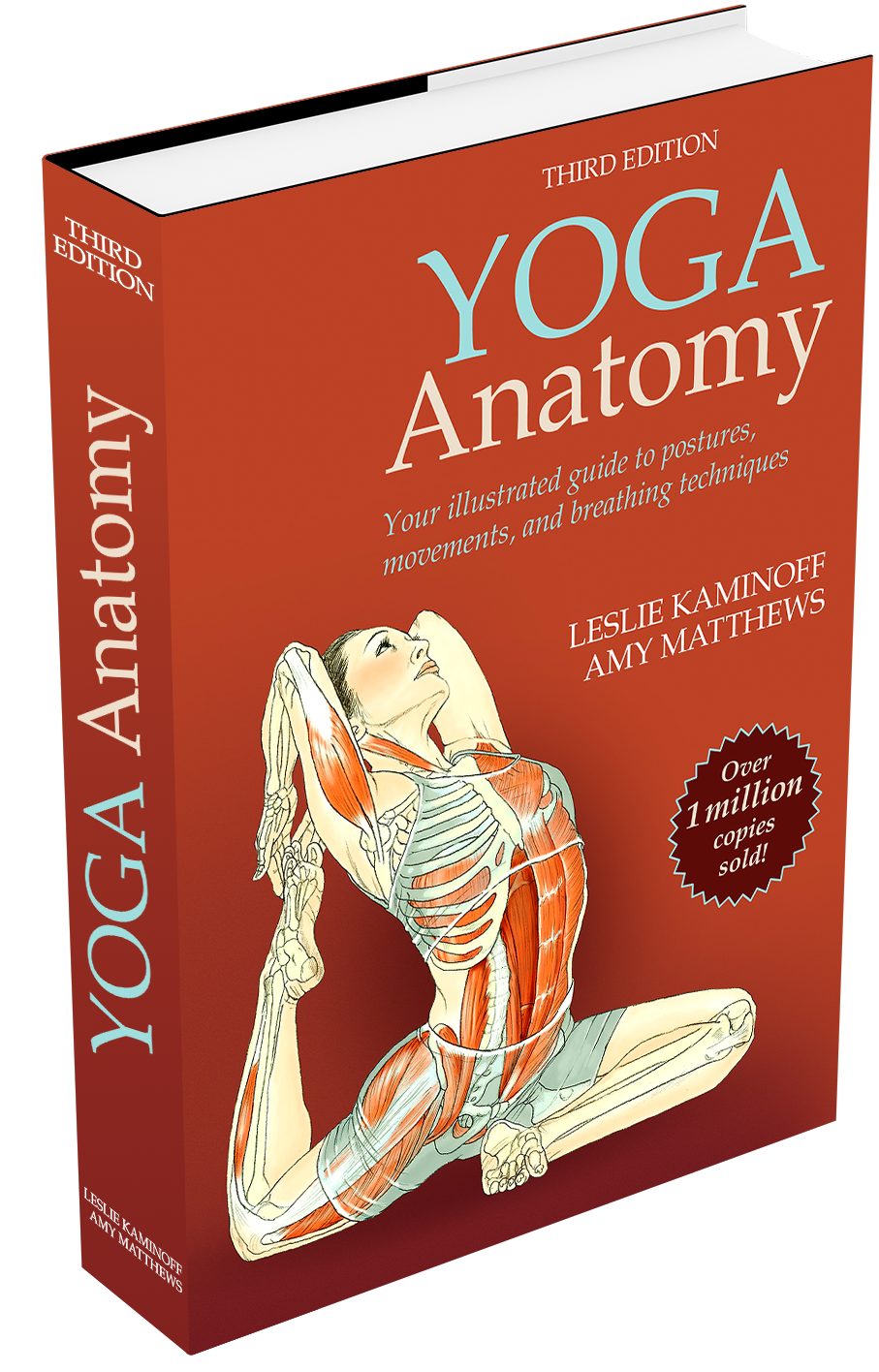Utthita Trikonasana

Notes
In utthita trikonasana, as in utthita parsvakonasana, the weight of the torso falls mostly over the front leg. Because the front knee is extended, the action in this pose is shifted from the eccentric contraction of the quadriceps to keep the knee from bending too deeply (as in utthita parsvakonasana) to the balance of actions around the joint that create a clear pathway of support without hyperextending the knee.
Pain or pressure in that front knee can be a result of lack of mobility in the hip joints and pelvis; whether the lack of movement is from short adductor muscles or another cause, the next place the movement can travel is the inner knee. Sensations from within the knee (or any joint) are important signals to stop what you’re doing and adjust your action or position. In the back leg, the muscles that cross the side of the pelvis, the outer hip, and the outer knee need to be actively lengthening (eccentrically contracting) to allow the pelvis to tilt sideways (adduct) over the leg. If these muscles cannot lengthen, the pelvis does not move as much, and the spine side bends. On the other hand, if these muscles are not active at all, the weight of the torso can collapse into gravity and put pressure in the outer hip joint or outer ankle joint.
Does the spine rotate in utthita trikonasana? There are many different ways utthita trikonasana is taught, and good reasons exist for each perspective. In general, the more articulated the SI joints, pelvic halves, and hip joints are, the less rotation is needed in the spine for the chest to face sideways. For example, if the front leg has a tight pectineus, which is an adductor, the pelvis may rotate to the floor, and the spine has to counterrotate more to open the chest. The rotation of the spine can accommodate a variety of obstacles in the legs. As in all the poses, maintaining balanced joint space is far more important than achieving a particular range of motion in one or two joints.
Images from the book Yoga Anatomy by Leslie Kaminoff & Amy Matthews displayed on this website are used under license.

Love Learning with Leslie?
Study with him personally online, from anywhere in the world.
Which course is right for me?
